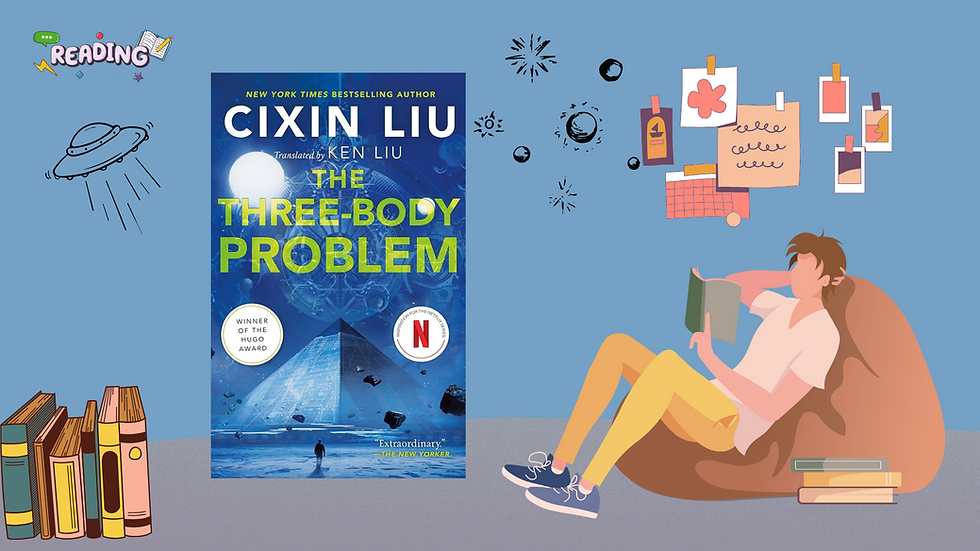The Three-Body Problem: A Sci-Fi Tale Across Two Mediums
- Vinit Nair
- May 10, 2024
- 2 min read
Rating: 3.4/5 ⭐️

Liu Cixin's science fiction novel The Three-Body Problem has gained renewed attention with the recent release of the Netflix series adaptation. As a fan of sci-fi, I was aware of the book's acclaim for some time, but the show finally motivated me to dive into the source material to get the full story.
The novel follows astrophysicist Ye Wenjie who, disillusioned with humanity after experiencing the horrors of China's Cultural Revolution, makes contact with the alien civilization of Trisolaris. This sets in motion a chain of events as the Trisolarans, facing the impending destruction of their planet, plan an invasion of Earth.
One of the book's strengths is providing the Trisolaran perspective, detailing how their society tackles the three-body problem of their chaotic planet, prepares for the invasion, and reacts to unfolding events. Getting this alien viewpoint adds welcome depth to the story.
However, the novel sometimes gets bogged down in dense technical details and exposition, slowing the pacing to a monotonous crawl at times. Here the Netflix adaptation makes some smart changes, streamlining the plot and fleshing out the characters to heighten engagement.
For example, the show splits the character of Wang Miao into multiple scientist characters, giving them distinct personalities and story arcs. It also visualizes abstract concepts like the Sophons in clever ways. While not always faithful, these alterations make for more compelling television.
Overall, The Three-Body Problem is a thought-provoking novel of first contact and looming existential threat, even if the dry, technical prose sometimes blunts its impact. The Netflix series, while diverging significantly, captures the spirit and key ideas of the book in a more character-driven, fast-paced format. For the full story and alien perspective though, it's still worth turning to Liu Cixin's original work.





Comments